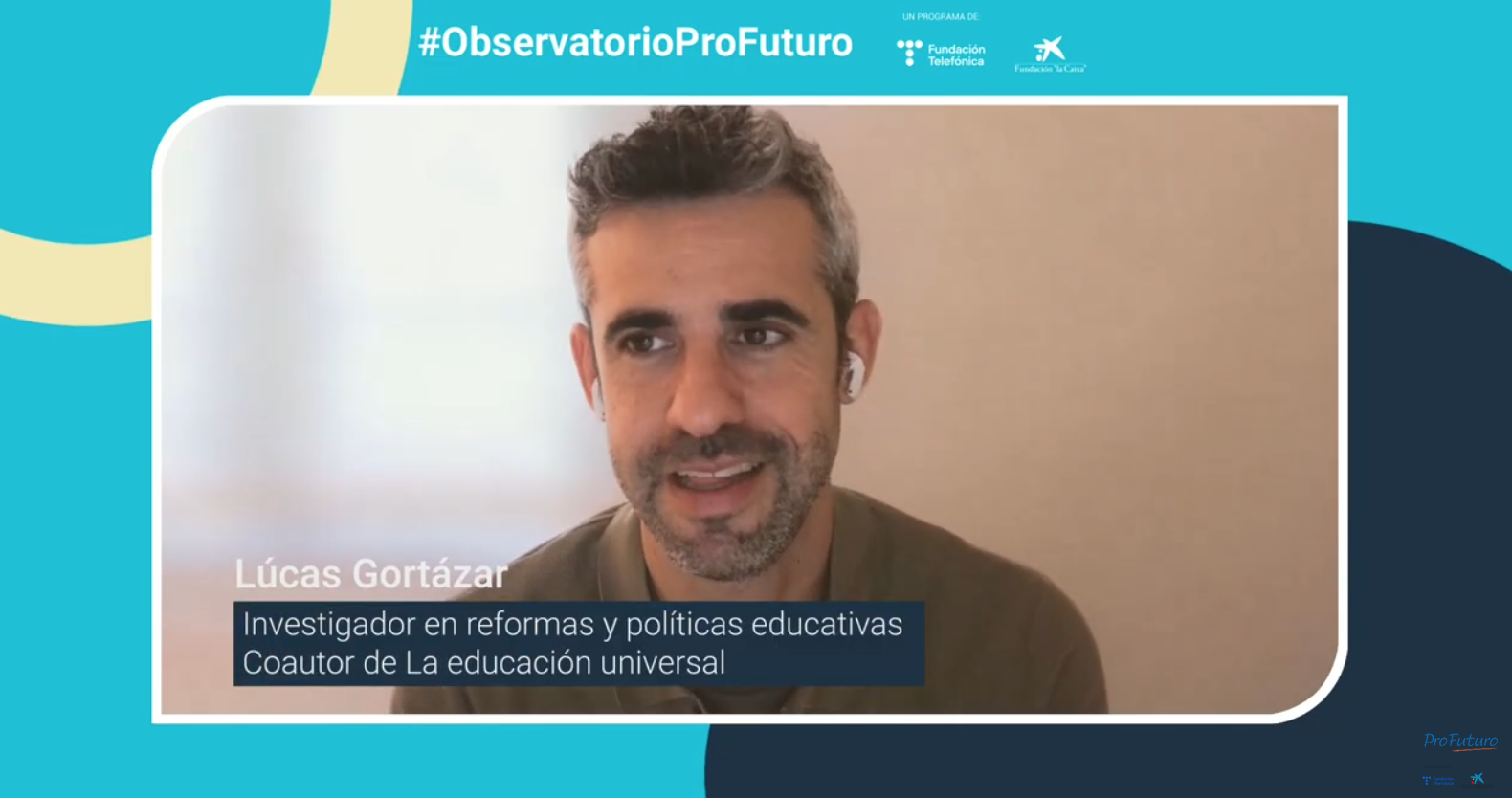Common sense tells us that when parents show interest in their children’s education, monitor their homework, and communicate with the school, the children’s performance at school should be better than when families are disengaged. But, what exactly are we discussing when we talk about family involvement? Helping with homework? Ensuring it gets done? Communicating with the school? Discussing school with the children?
Family involvement in their children’s education influences their academic and cognitive development. However, not all forms of involvement have the same beneficial effects. Evidence suggests that parental participation in education is more complex than it might appear. This is evidenced by a metaanálisis, which included 37 studies conducted between 2000 and 2013 in preschool, primary, and secondary schools, finding that beyond mere supervision of schoolwork, the most effective practices involve communication between parents and children about school and promoting an environment that encourages learning and reading at home.
This is consistent with findings from the study Parental involvement and academic performance: Less control and more communication, highlighted in this article by EduCaixa, which suggests that among the two most common styles of family involvement, controlling and communicative, families whose children belong to the latter group show better school performance. According to this study, these profiles of family involvement also impact the school environment: schools with families that exhibit a more open and communicative style achieve better results, reducing disparities among students and thereby fostering a more equitable education.
What do we mean when we talk about family involvement? Helping them with their homework? Making sure they do it? Communicating with the school? Discussing it with the girls and boys?
Other studies emphasise the value of enhancing a learning environment at home from the early years and continuing to adapt this environment to meet the changing needs of children as they grow.
To assist schools in considering how they can work with families and caregivers to improve student learning, EduCaixa has published a guide with some evidence-based recommendations. We summarise them in this article.con algunas recomendaciones basadas en la evidencia científica. En este artículo las resumimos.
Critical Planning and Review of School Work with Families
To ensure effective collaboration that improves students’ academic outcomes, schools need to critically review their methods of working with families. Although the positive impact of family involvement on school performance is recognized, schools must approach this aspect with caution and regularly check the effectiveness of their practices.
- The strategy of involvement should be adaptive according to the age of the students. In the early years, it is beneficial to focus on the development of oral language and self-regulation. As students progress, activities can focus on basic reading and mathemathical skills. In later stages, it is important to promote reading comprehension and independent learning skills.
- Planning and review aimed at supporting learning. For effective implementation, schools should clearly plan the objectives of family involvement and continuously review current practice to assess its effectiveness. It is essential to listen to less involved families to understand their needs and adapt activities accordingly. Collaboration with families should not only aim to improve attendance or school climate but should focus on directly supporting student learning.
- Focus on quality and approach rather than quantity. In addition, collaboration with families requires strategic planning that does not necessarily involve increasing the number of activities but improving their quality and focus. Identifying opportunities to provide additional support to families, such as collaborations with local organizations, can be crucial without requiring a significant investment of resources.
- Training of the entire school community. Finally, it is important that all school staff, from leaders to teachers and support staff, understand and are committed to the objectives of family involvement. This includes specific training to enhance staff capabilities in this area, as well as establishing systems to monitor and adjust the family involvement strategy to ensure that the desired impacts on student learning are achieved.
La implicación de las familias en la educación de sus hijos influye en su desarrollo académico y cognitivo. Sin embargo, no todas las formas de implicarse tienen los mismos efectos beneficiosos.
Practical Strategies for Encouraging Learning at Home
Schools can play a key role in supporting families to improve students’ academic outcomes by providing practical guides and promoting concrete actions that can be taken at home. Depending on the age of the students, strategies for involving families vary. For younger children, shared activities such as reading or educational games are effective, while for older students, the focus shifts towards fostering an environment that encourages independent learning.
- Age-appropriate reading skills. A fundamental aspect is supporting the development of language and literacy from an early age, promoting practices such as shared reading. This not only includes the act of reading but also making it an interactive activity that encourages dialogue and discussion. As children grow, it is crucial for families to continue actively participating in activities that promote comprehension and literary criticism skills, such as discussing the content of books or relating them to real-life experiences.
- ORIM Framework (Opportunities, Recognition, Interactions, Model). Schools can use models like the ORIM framework, which highlights the importance of creating learning opportunities, recognizing achievements, interacting meaningfully, and serving as a positive model. This structure helps identify practices that can strengthen students’ academic development at home.
- Encouraging good homework habits. Another important dimension is homework management, which has proven to be more effective when it involves focused tasks well integrated with what is learned in class. It is essential for schools to guide families on how to support students in doing homework without directly involving themselves in the tasks, instead promoting self-regulation and good study habits.
- Summer reading. Finally, during periods such as summer vacations, programs that promote reading can be particularly beneficial, especially for students from less-resourced families. Projects like the Summer Active Reading Programme in the UK have shown potential to mitigate declines in reading performance during these periods, suggesting that well-planned and continued interventions can have a significant impact on literacy and language.
Adapting School Communications to Foster a Positive Dialogue About Learning
Effective communication between schools and families is crucial for improving various aspects of student performance, including attendance and learning. Adapting communications to foster a positive dialogue is essential at all educational levels. Well-designed and personalized communication, specifically focused on learning and presented in a positive manner, can be particularly effective. This includes celebrating successes and providing useful and practical tips for learning at home.
- Personalization of communication with easy, clear, and regular but not excessive text messages. Personalizing communication has proven to be a more effective strategy than generic methods, such as emails or impersonal letters, especially when it comes to engaging families that usually participate little. A useful approach might be the use of text messages that offer concrete tips on daily activities that promote learning skills. These messages should be clear and easy to implement to motivate families to actively participate in their children’s learning. For primary students, it is beneficial to focus on messages that suggest joint activities between parents and children that are both educational and fun. For example, linking the counting of objects with everyday tasks can make learning more interactive and relevant. For secondary students, it is more effective to provide families with information about academic progress and upcoming assignments. It is vital that the information is accessible and does not overwhelm parents with complex terms or inappropriate study strategies. The frequency and timing of message delivery are also important. Sending messages regularly but not excessively can maintain interest and engagement without causing information fatigue.
- Two-way communication. It is also essential to collect and consider feedback from families to adjust the frequency and content of communications, ensuring that they are perceived as helpful and not as a burden.
- Involving various family members in communication can broaden the impact and support for the student’s learning.
- Being aware of the impact. Finally, it is crucial that schools are aware of the impact of their communication on the beliefs and behaviours of families. For example, informing families about the actual school attendance of their children can motivate significant changes in their behaviour to improve attendance.
Offering More Sustained and Intensive Support Where Needed
Some students may require a more sustained and intensive approach to fostering family involvement, especially those with reading difficulties, from disadvantaged backgrounds, or with behavioural issues. Intensive approaches, focused on specific families or outcomes, are associated with better learning achievements.
- Assessment of needs. It is important to start by assessing needs and talking with families about how the school could help them support learning: it is important to select families carefully to use resources effectively and avoid widening the educational equity gap.
- Care with communication. Attention must be paid to communication to avoid stigmatizing, blaming, or discouraging families, and focus on improving its effectiveness, emphasizing that they play an equally important role and can make a difference.
- Promoting a consistent approach in terms of attitude between families and the school; for example, sharing expectations with families.
- Planning interventions considering time and place. Careful planning of group initiatives on parenting (such as frequent workshops) is necessary. For families to attend these group sessions, the most important factors are that the schedule and location are suitable, that families are invited in person, that trust relationships are developed, and that an informal and welcoming environment is created.
- Home visits. It would be interesting to offer frequent home visits to the homes of younger students with greater needs. This can be an effective approach for families that have difficulty attending meetings and for building bonds.
The evidence shows that there is a direct and close relationship between students’ academic progress and the involvement of families in their children’s learning. Therefore, schools can and should articulate actions that promote the participation of families in the learning process of their children. It is not about “assigning homework” to families; it is about helping them use their everyday lives as a positive source of learning for all. This means that it is crucial for schools to prepare, with guides like the one from Educaixa, to communicate effectively and positively with families, but also to learn the keys necessary to plan, monitor, and evaluate the activities they carry out to promote and achieve family involvement for the improvement of students’ learning.
Access the complete guide:







